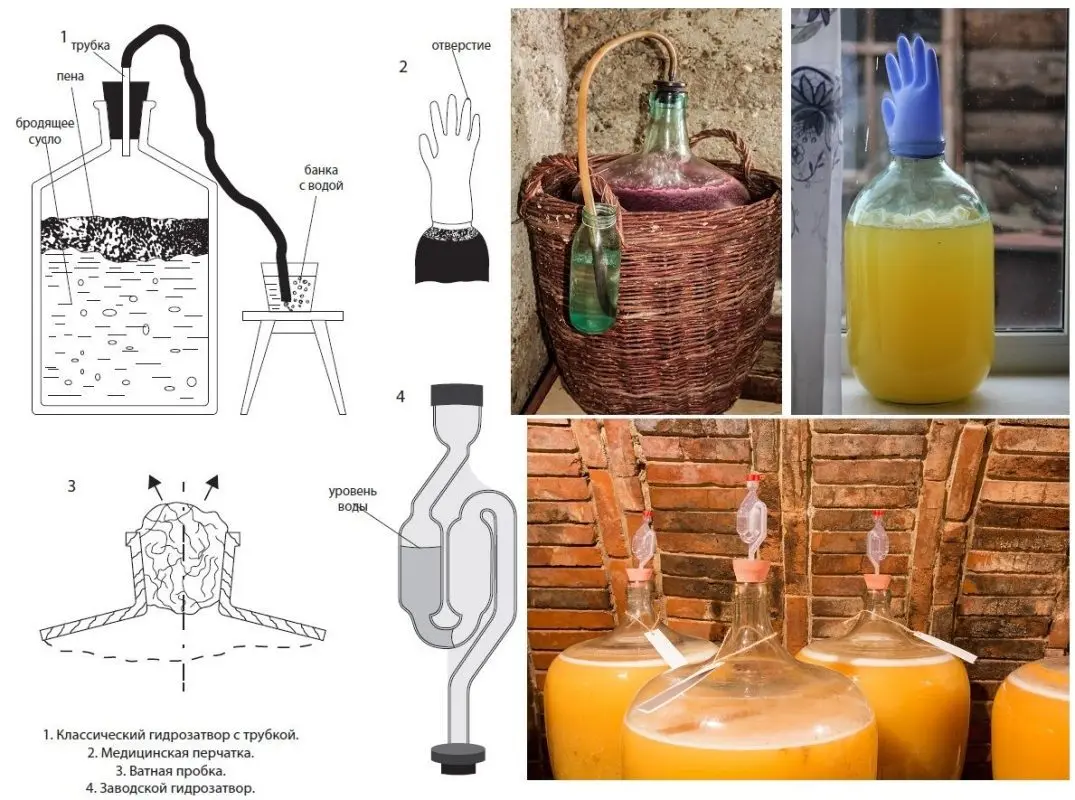Yoshta is a successful hybrid of blackcurrant, gooseberry and common gooseberry, bred in Germany by breeder Rudolf Bauer in the 70s of the last century. A high-yielding plant is not afraid of cold weather, has larger berries than currants, is resistant to bud mites and terry, and there are no thorns on the branches for which gooseberries are “famous”. Homemade wine from yoshta turns out red with a characteristic taste of currants, but a weak aroma. We will consider the complete technology for making a drink.
First, all tools and containers used must be sterilized with boiling water and wiped dry with a clean, dry cloth in order to prevent mold from infecting wine – a fungus can ruin an entire batch of wine.
Ingredients:
- yoshta berries – 3 kg;
- water – 3 liters;
- sugar – 1,2 kg;
- wine yeast or sourdough – per 7 liters of must (optional).
Yoshta wine recipe
1. Sort Yoshtu, remove the stalks, spoiled, unripe and moldy berries.
It is advisable not to wash the fruit so that wild yeast remains on the skin, which will start fermentation. If the berries are still washed, then for safety reasons it is better to add sourdough or store-bought wine yeast.
2. Knead the yoshta with your hands or with a wooden rolling pin, crushing each berry.
3. Transfer the resulting mass to a non-metallic container with a wide neck.
4. Dissolve 50% sugar (600 grams) in water. Pour the finished syrup into crushed berries, add wine yeast or sourdough (optional), mix.
5. Bandage the neck of the container with gauze to protect against insects. Leave the must in a dark room at room temperature (18-28°C) for 4 days.
8-12 hours after laying, signs of fermentation should appear: a slight hiss, foam on the surface and a sour smell.
2-3 times a day, mix the must with a clean hand or a wooden stick, drowning the pulp in the juice – particles of skin and pulp that have floated to the surface. Without stirring, the berry mass can sour or become moldy.
6. Filter the wort through several layers of gauze, squeeze out the pulp well (no longer needed).
7. Add the second portion of sugar to the drained liquid part – 25% (300 grams). Mix.
8. Pour the wort into a fermentation tank, filling to a maximum of 75% of the volume to leave room for foam and carbon dioxide. Install a water seal on the neck or fasten a medical glove with a hole in the finger.

9. Leave the container with the future wine in a dark place (cover with a thick cloth) with a stable temperature of 18-28°C.
10. 5-6 days after the installation of the water seal, add the remaining sugar – 25% (300 grams). To do this, remove the water seal from the fermentation tank, separately pour about half of the wort from a portion of sugar (150 ml), add sugar, mix. Pour the resulting syrup back into the wort and close the container with a water seal.
11. Depending on the activity of the yeast and the temperature, the fermentation of wine from yoshta lasts 30-55 days, then the water seal stops gurgling (to release gas) or the glove deflates, a layer of loose sediment appears at the bottom, and the wine itself becomes noticeably lighter. If these three signs match, you can proceed to the next stage.
If fermentation does not stop after 60 days from the date of laying the must, in order to avoid bitterness, drain the wine from the sediment and let it ferment under a water seal at the same temperature.
12. Carefully drain the fermented young wine through a tube or hose into another container, without touching the sediment at the bottom. If desired, sweeten the drink with sugar to taste or fix it with alcohol (vodka).
13. Pour the wine into maturation containers, being careful to fill up to the neck to minimize contact with oxygen. Close hermetically. If sugar was added at the previous stage, keep the first 7-10 days under a water lock in case of repeated fermentation.
14. Transfer the young wine from yoshta to a refrigerator, cellar or cellar with a temperature of 3-16°C. Leave for at least 60 days, the optimal exposure time is 5-6 months.
15. As sediment appears in a layer of 4-5 cm (at first once every 10 days, then less often), filter the wine by pouring through a tube from one container to another, without touching the sediment.
16. The drink is considered ready if the sediment does not appear for a couple of months. Ready homemade yoshta wine can be bottled for storage and hermetically sealed.
Shelf life when stored in a refrigerator or cellar – up to 5 years. Fortress – 9-12%.










